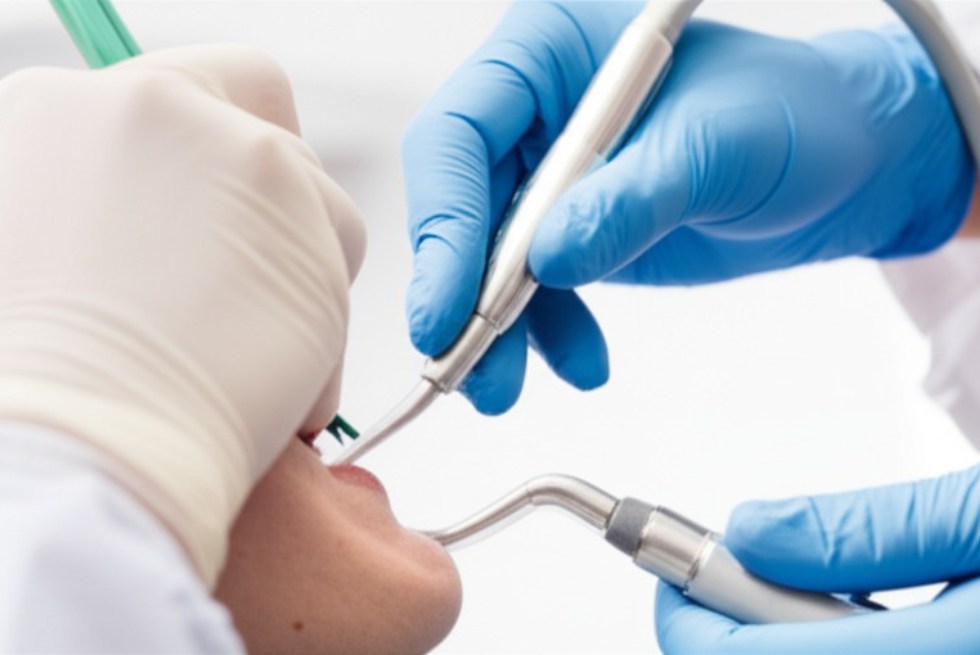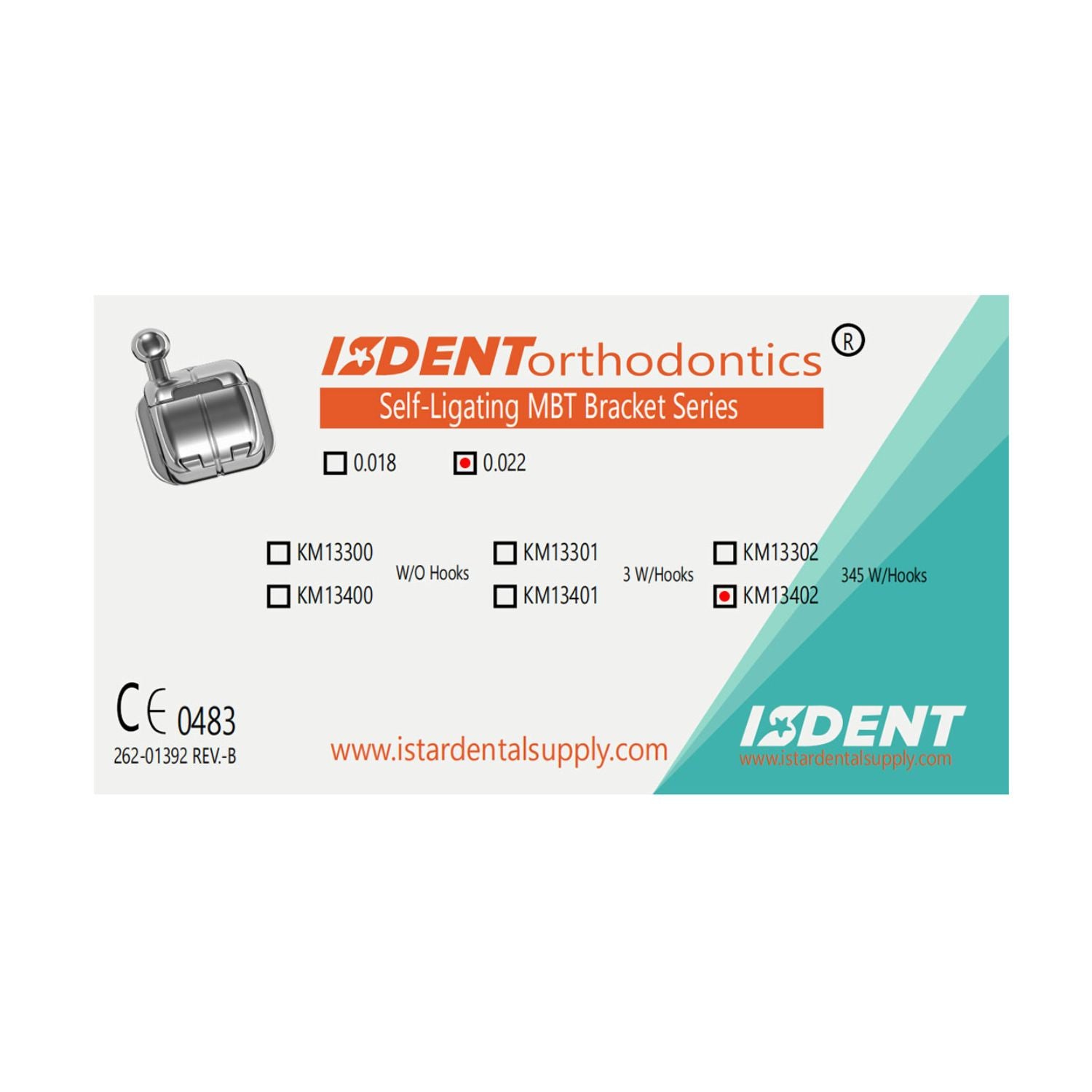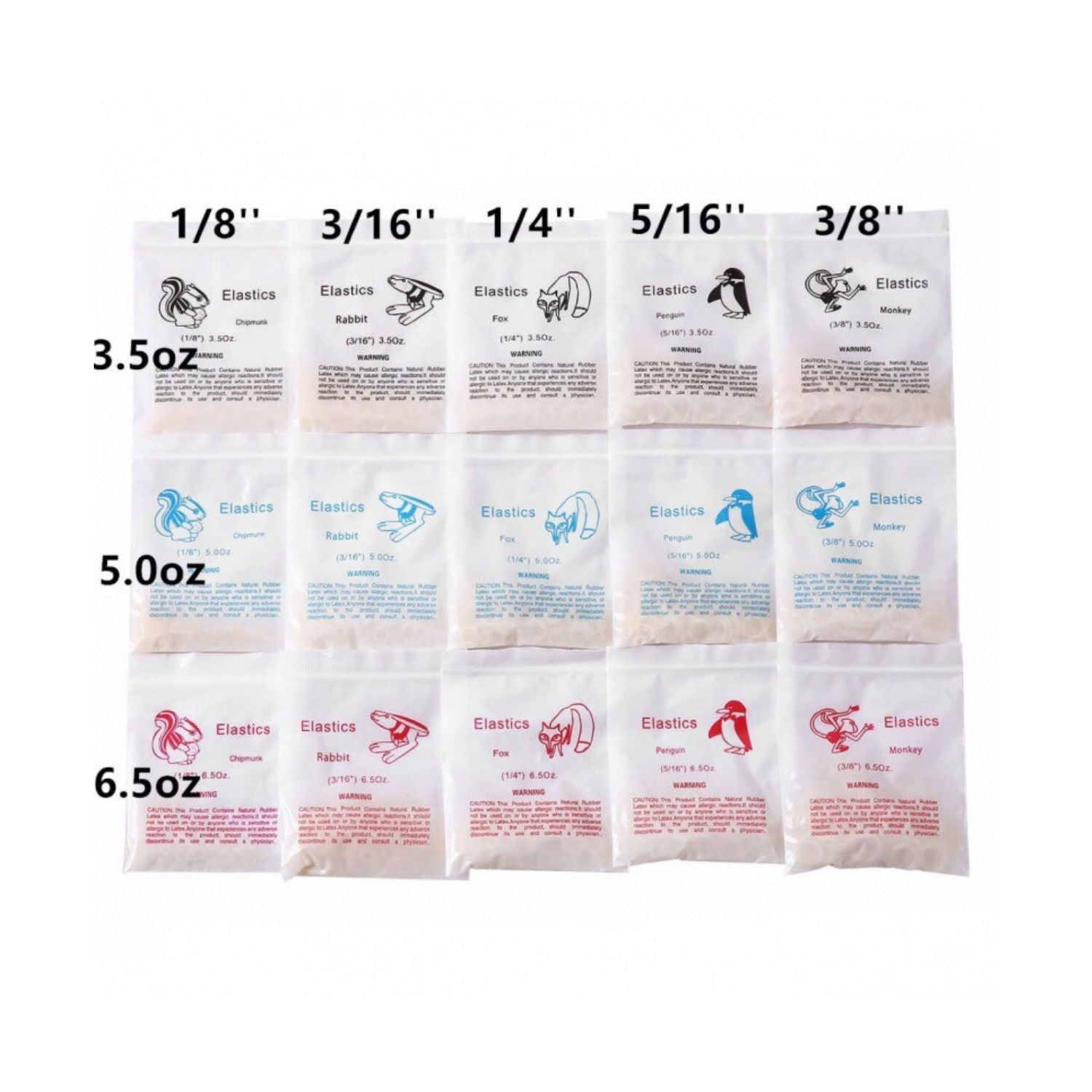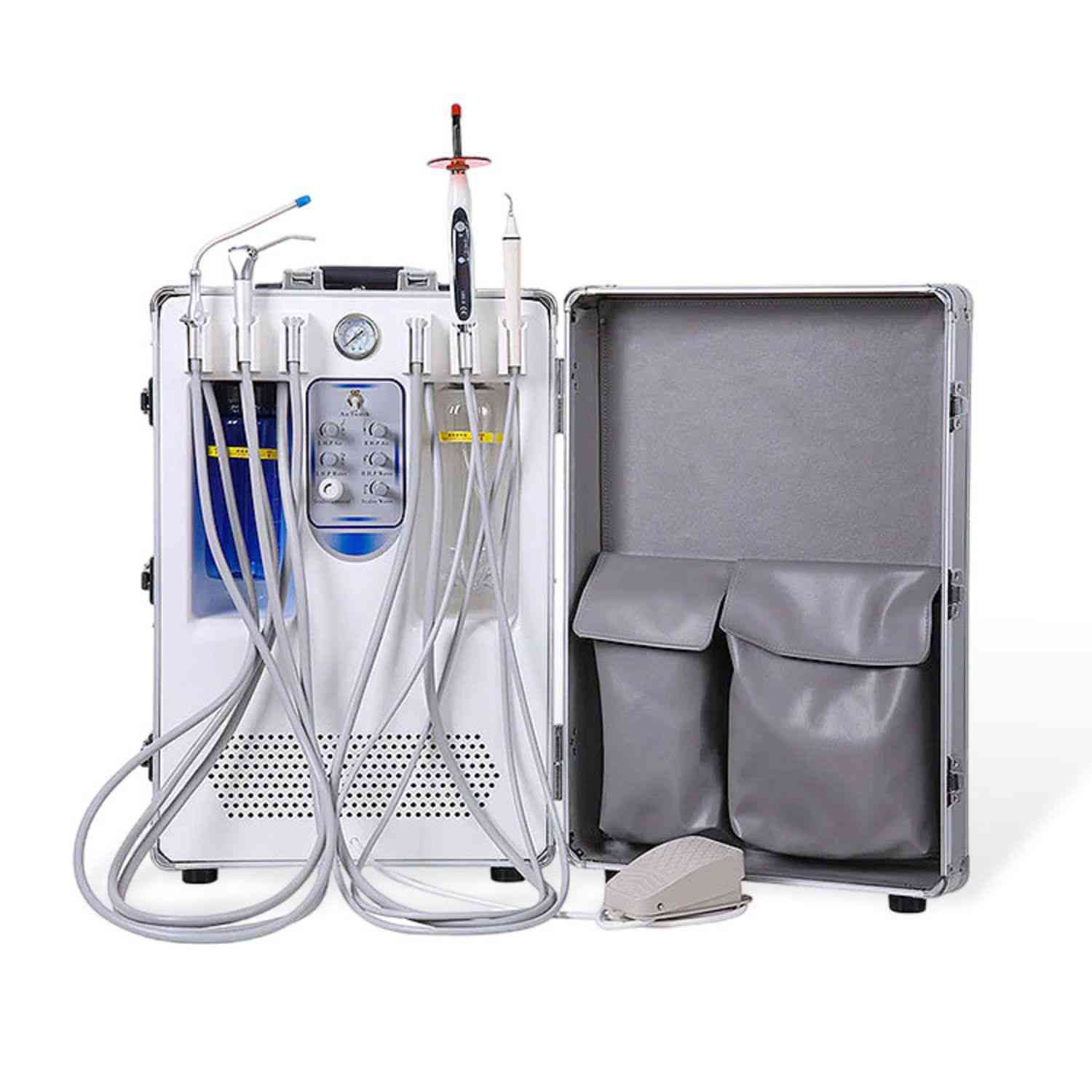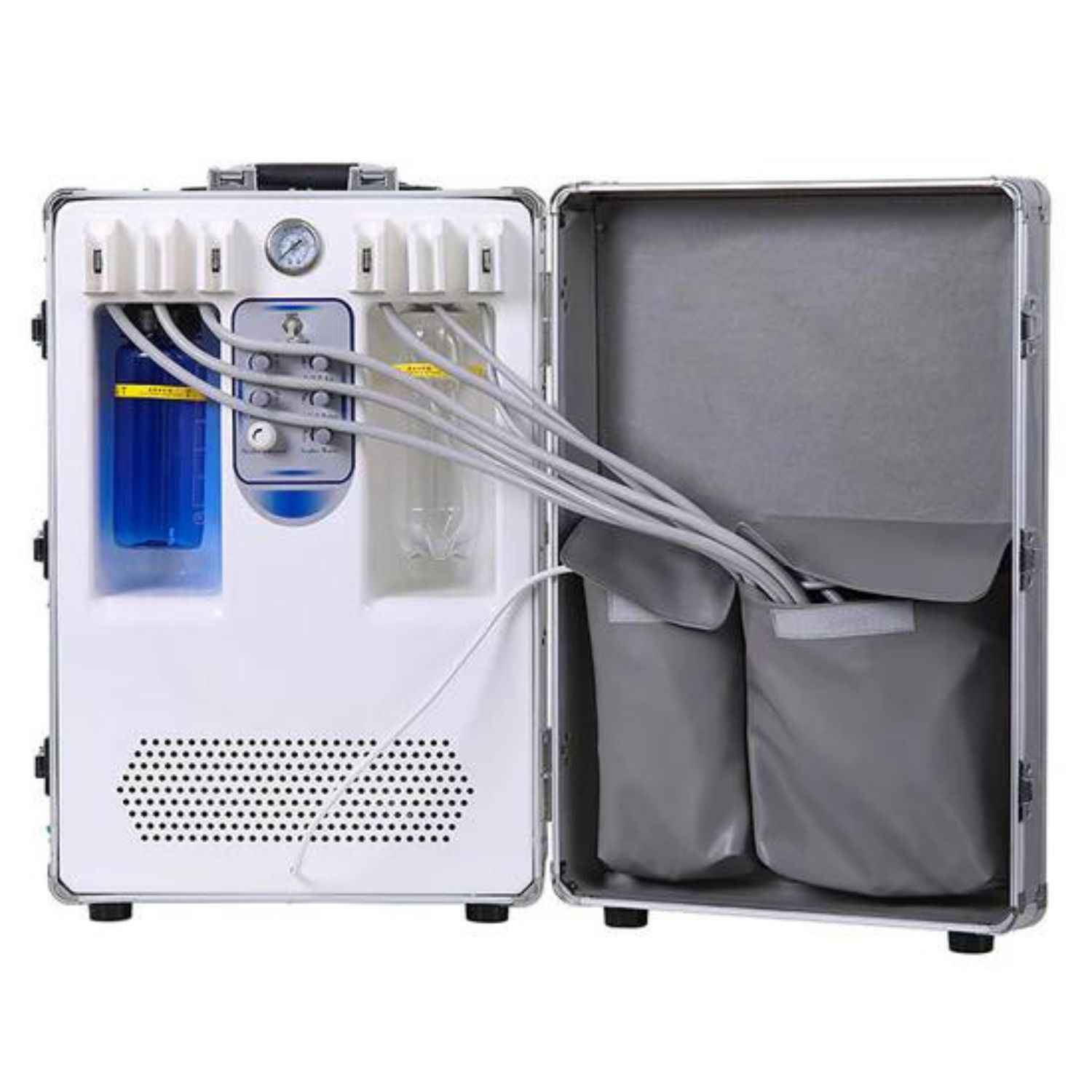Why Do Dentists Use Suction? A Look at the Best Dental Suction for Saliva and Safety
The little tube that slurps up water and saliva is one of the most important tools in the room. You might know it as the “spit sucker,” but it has a real name: the dental suction device. This simple tool is a true hero in the world of dentistry. It keeps you safe, makes you comfortable, and helps your dentist do their best work. This article will explain exactly what dental suction is, why it is so critical for many procedures from cleanings to oral surgery, and how it makes your visit to the dentist better and safer.
What Exactly Is a Dental Suction Device?
The dental suction device is a perfect example. You know it as the small tube the dental assistant holds in your mouth. Its main job is to remove saliva and other fluids from your mouth during dental procedures. It works like a tiny, very precise vacuum cleaner for your oral cavity. The tool is connected by a hose to a suction machine, which creates the vacuum power.
This simple-sounding dental tool is essential for almost every dental visit. Think about it. Your mouth naturally produces saliva. When the dentist is using water to clean your teeth or cool down their tools, that water needs to go somewhere. The suction device takes care of all that liquid. It removes saliva and debris, keeping the area clean and dry.
Without it, your mouth would fill up with water and saliva in seconds. This would make it impossible for your dentist to see what they are doing. It would also be very uncomfortable for you. The dental suction device is a key part of modern dentistry that ensures both the quality of the work and your comfort in the treatment chair. It's a small but mighty piece of equipment.
Why Is Removing Saliva So Important in Dentistry?
Many materials used in dentistry, especially in restorative dentistry, are very sensitive to moisture. For example, if a dentist is placing a filling or a crown, they use a special glue called a bonding agent. If even a tiny drop of saliva touches the tooth surface before the bonding agent is applied, the bond can fail. This means your filling or crown could fall out later. So, the consistent suction provided by the dental suction tool is critical for long-lasting dental work.
Furthermore, saliva can block the dentist's view. It can also be full of bacteria. If you have a lot of saliva in your mouth, it can make the work area messy and unhygienic. By removing excess saliva and fluids, the dental suction device helps keep the procedure clean. This reduces the risk of infection and ensures that the dental treatment without any hitches is a success. This is why a good suction device is so important.
What Are the Main Types of Suction a Dentist Might Use?
Not all suction is the same. The two main types you will see are the saliva ejector and the high-volume evacuator, or HVE. You are probably most familiar with the saliva ejector. This is the smaller, straw-like tube with a flexible tip. It has lower suction power and is designed to gently remove small amounts of air and saliva. It's the one that often just hangs in the corner of your mouth during cleanings.
The other type of suction is the high-volume evacuator (HVE). This is the bigger, more powerful tool. The HVE is a wider tube that the dental assistant holds very close to the tooth being worked on. It has much stronger suction power and is designed to remove a lot of water, debris, and saliva particles all at once. The HVE is especially important for procedures involving fast-moving dental tools, like a drill.
The HVE does more than just suck up water. It also captures the aerosol spray that is created by the high-speed tools. This spray is a fine mist of water, saliva, and germs that can fly out of your mouth. Capturing this aerosol is a huge part of infection control in the dental practice. It helps protect both patients and staff from the spread of germs and bacteria. So, while the saliva ejector is for light work, the HVE is the heavy-duty hero of dental suction.
How Does Chairside Suction Keep Me Safe and Help Me Not Choke?
The fear of gagging or choking is a real part of dental anxiety. The good news is that the dental chairside suction is your number one protector against this. Its most important job is to ensure your health and safety during treatment. When a dentist is using water sprays and other tools, the chairside suction immediately removes all that liquid from the back of your throat.
This prevents the liquid from pooling and triggering your gag reflex. More importantly, it prevents aspiration, which is the medical term for accidentally breathing fluid into your lungs. This can be very dangerous. The dental suction system is constantly working to keep your airway clear and safe. This is especially vital during long procedures like oral surgery or when getting a crown, where a lot of water is used for a long time. You can relax knowing the suction is there to prevent you from having to swallow or choke.
The suction also helps remove small bits of debris. Think about old fillings being removed or teeth being shaped. Tiny pieces can break off. The powerful HVE sucks up these fragments before they can become a problem. The presence of foreign objects in your mouth is carefully managed by this tool. This is a key safety feature that lets the dentist focus on their work. It's a simple idea, but this constant clearing of liquid and foreign objects in your mouth is what makes modern dentistry so safe.
Can Using a Dental Suction Device Help with My Patient Anxiety?
As someone who writes about making dental visits better, patient anxiety is a huge hurdle for many people. It might surprise you to learn that a simple suction tube can actually help you feel more relaxed. A big part of feeling anxious comes from a sense of not being in control. When your mouth is full of water and you feel like you can't swallow, it can be scary. This is where suction helps.
The constant, gentle slurping sound of the saliva ejector can be a bit reassuring. It’s a sign that everything is being taken care of. You don’t have to worry about what to do when there’s too much saliva. The dental suction device will allow you to just lie back and breathe normally through your nose. It helps keep you from drooling, which can be embarrassing and uncomfortable. This focus on patient comfort is a big deal.
If you have a strong gag reflex, which can be a source of both anxiety and dental trauma, the suction is your best friend. Your dental assistant is trained to place the suction tip in a way that helps control gagging. For some people, feeling less anxious can make a huge difference. If you experience a lot of anxiety, you might also want to learn more about sedation during your treatment. Combining sedation with excellent suction can make even complex procedures feel easy and stress-free.
What Is the Role of Suction in Restorative Dentistry?
When a dentist works on transforming your smile with fillings, crowns, or veneers, this is called restorative work. This area of dentistry is fascinating because it is like art and science mixed together. In cosmetic and restorative procedures, success depends on perfect conditions. The most important condition? The work area must be completely dry. This is where dental suction plays a starring role.
The bonding agent that makes a filling stick to your tooth will not work if it gets wet. The dental suction device your cosmetic dentist uses ensures a perfectly dry field while the dentist is completing the work. The assistant will use the HVE to keep a constant flow of air and suction right on the tooth, keeping it perfectly dry.
This is critical for the longevity of your dental work. A crown that is placed on a slightly damp tooth will eventually fail. A filling will leak and get new decay underneath it. By keeping the tooth isolated and dry, the suction device your cosmetic dentist uses ensures the work will last for years. This is why a good dentist and assistant team work so well together. While the dentist focuses on the tooth, the assistant manages the environment with the dental suction device, making sure every step is perfect. For more information, you can read about our cosmetic and restorative services.
How Does a Dentist Use Dental Suction During a Procedure?
It might look simple, but there is a real technique to using a dental suction device correctly. I’ve watched many procedures, and the dental assistant’s skill with the suction tip is impressive. How they use dental suction depends on the procedure. For a simple check-up or cleanings, the assistant might just place the low-volume saliva ejector in your mouth to catch any extra saliva. It does its job quietly in the background.
During more active dental procedures, like filling a cavity, the assistant will use the high-volume evacuator (HVE). They hold the tip very close to the tooth the dentist is working on. This is done for two reasons. First, it immediately captures the water spray from the drill. Second, it retracts your cheek or tongue, keeping them safely out of the way of the fast-moving dental tools. This teamwork between the dentist and assistant is like a well-rehearsed dance.
The goal is to keep the patient’s mouth clear without getting in the dentist's way. The assistant must constantly adjust the angle and position of the suction tip. This ensures they are removing debris and water effectively without blocking the dentist's view or causing you discomfort. It’s a skill that takes practice and makes a huge difference in how smoothly the appointment goes.
Is the Suction Tube Clean and Safe to Use?
People see the suction tube go from patient to patient and worry about cleanliness. You can rest easy. Infection control is the number one priority in any modern dental practice. The part of the dental suction device that actually goes into your mouth is a disposable, single-use plastic tip. A brand new, sterile tip is used for every single patient and is thrown away immediately after your appointment.
The rest of the system, including the hoses and the main suction unit, goes through a strict cleaning process every day. The dental staff flushes powerful cleaning and disinfecting solutions through the lines to kill any germ or bacteria that may have been pulled into the system. This prevents what is called "backflow," which is the very rare possibility of material from the tube flowing back into a patient's mouth.
Modern suction systems are designed with anti-backflow valves to prevent this. The strict cleaning protocols and single-use tips ensure that the spread of germs is not a concern. Your dentist and their team are highly trained in these procedures to protect you. The health and safety of both patients and staff depend on it, so they take it very seriously. To learn more, check out our page on our commitment to safety and sterilization.
What Makes for the Best Dental Suction in a Dental Practice?
When it comes to dental suction, what makes a system the "best dental suction"? It comes down to a few key things: power, reliability, and quiet operation. A great suction unit must have enough suction power to handle any procedure, from a simple cleaning to complex oral surgery. It needs to maintain a constant static vacuum pressure, so there are no dips in performance.
Reliability is also huge. A dentist needs the suction to work perfectly, every time. If the suction machine breaks down in the middle of a procedure, it can cause major problems and delays. That’s why a good dental practice invests in high-quality equipment and maintains it carefully. The system needs to provide consistent suction from the first patient of the day to the last.
Finally, while it might seem small, the noise level matters. A loud suction system can add to patient comfort issues and make communication between the dentist and assistant difficult. The best systems are powerful yet relatively quiet. Investing in the best dental suction system is an investment in efficiency, safety, and a better patient experience. A good dentist knows that quality tools lead to quality dental care.
Why Is an Unobstructed View So Critical for Your Dentist?
Imagine trying to paint a tiny, detailed picture on a canvas that is constantly being sprayed with water and is covered by a moving curtain. That’s what it would be like for a dentist to work without suction. A clear, unobstructed view is maybe the most important factor for performing precise dental work. The dentists use suction not just for safety, but so they can see exactly what they are doing.
The HVE does more than just remove saliva and other fluids; it also helps retract the soft tissues of the mouth, like the cheeks and tongue. This keeps them out of the field of view and away from the instruments. This gives the dentist a clear line of sight to the tooth. When performing dental work, every millimeter matters. A clear view allows the dentist to be more precise, which means better results for you.
Whether the dental suction device your cosmetic professional is using is for a filling, a crown, or a veneer, that clear view is essential. It lets them see the tiny details of the tooth's shape, check for any remaining decay, and make sure the margins of a restoration are perfectly sealed. Without a clear and dry while the dentist works, the quality of the care would suffer. The dental suction tool is the unsung hero that makes this precision possible.
Key Takeaways to Remember
To learn more about dental suction, remember these key points:
-
It Keeps You Safe: Dental suction is your number one defense against gagging and choking on water or debris during a procedure. It prevents dangerous aspiration.
-
It Ensures Quality Work: Suction creates a clean, dry field which is necessary for restorative materials like fillings and crowns to bond properly to your teeth.
-
It Provides Comfort: The suction tool manages excess saliva and fluids, so you don't have to worry about drooling or swallowing. This can reduce dental anxiety.
-
It Protects Everyone from Germs: The high-powered suction captures aerosol spray, reducing the spread of germs and bacteria in the dental office and protecting you and the dental team.
-
It Helps Your Dentist See: A clear, unobstructed view allows your dentist to perform precise, high-quality work.

